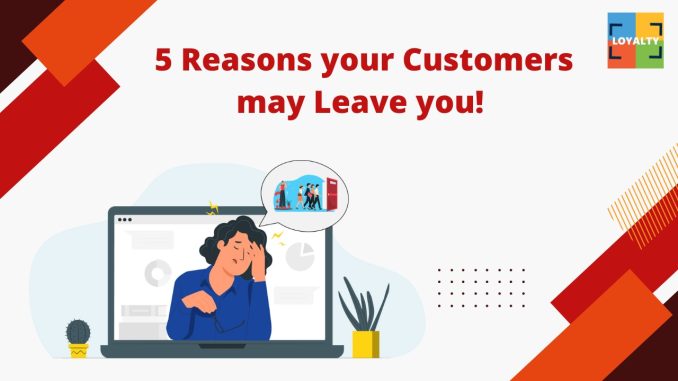
Customer loyalty is one of the most valuable assets a business can cultivate, yet it’s often misunderstood or taken for granted. What makes customers stay isn’t just about the product or service itself—it’s about the entire experience, the relationship, and the emotional connection they build with a brand over time. Conversely, what makes them leave is rarely a single event. It’s usually a gradual erosion of trust, relevance, or satisfaction that eventually tips the scale. Understanding these dynamics is essential for businesses that want to thrive in competitive markets and build lasting customer relationships.
At the core of customer retention is value. Customers stay when they consistently feel that what they’re getting is worth their time, money, and attention. This value can be functional, such as a product that performs reliably, or emotional, like the sense of belonging that comes from being part of a brand community. For example, a fitness app that not only tracks workouts but also celebrates milestones and connects users with others on similar journeys creates a deeper sense of engagement. That emotional layer reinforces loyalty and makes the experience more than transactional.
Trust is another critical factor. Customers need to believe that a brand will deliver on its promises, protect their data, and treat them fairly. When trust is established, it creates a buffer against occasional missteps. A delayed shipment or a technical glitch becomes forgivable if the customer believes the company is acting in good faith. On the other hand, a breach of trust—whether through misleading advertising, poor customer service, or inconsistent quality—can quickly unravel the relationship. Once trust is broken, it’s difficult to rebuild, and customers are more likely to explore alternatives.
Consistency plays a subtle but powerful role in retention. Customers appreciate knowing what to expect, whether it’s the tone of communication, the quality of service, or the reliability of a product. Brands that maintain a consistent experience across touchpoints—online, in-store, through support channels—create a sense of stability that customers find reassuring. In contrast, inconsistency breeds confusion and frustration. If a customer receives excellent service one day and indifferent treatment the next, it undermines confidence and makes loyalty feel risky.
Personalization is increasingly important in keeping customers engaged. People want to feel seen and understood, not just processed through a generic funnel. Businesses that tailor their offerings, communications, and experiences to individual preferences demonstrate attentiveness and respect. For instance, a retailer that remembers past purchases and suggests complementary items shows that it values the customer’s time and taste. This kind of thoughtful interaction deepens the relationship and encourages repeat business. When personalization is absent or poorly executed, customers may feel like just another number—and that’s when they start to disengage.
Responsiveness is another key ingredient. Customers stay with brands that listen, adapt, and respond to their needs. Whether it’s resolving a complaint, answering a question, or incorporating feedback into product development, responsiveness signals that the company values the customer’s voice. It also shows agility and commitment to improvement. A brand that ignores feedback or fails to address issues in a timely manner risks alienating its audience. In today’s fast-paced environment, silence or delay can be interpreted as indifference, prompting customers to look elsewhere.
Community and connection can also influence loyalty. When customers feel part of something larger—a movement, a lifestyle, a shared identity—they’re more likely to stay engaged. Brands that foster community through events, social media, or user-generated content create a sense of belonging that goes beyond the product. This emotional bond can be a powerful retention tool. On the flip side, if a brand fails to nurture its community or loses touch with its audience, it can feel distant and impersonal. Customers may drift away in search of a more meaningful connection.
Price and convenience matter, but they’re rarely the sole reasons customers stay or leave. A competitive price might attract a customer initially, but if the experience doesn’t deliver value or satisfaction, they won’t stick around. Similarly, convenience can enhance loyalty, but it must be paired with quality and care. Businesses that rely solely on price or convenience risk being replaced by the next cheaper or faster option. Sustainable loyalty comes from a more holistic approach that considers the customer’s entire journey.
When customers leave, it’s often because of a cumulative effect. A missed delivery, a confusing website, a lack of follow-up—these small frustrations add up. If they’re not addressed, they create a narrative of neglect or incompetence. Customers begin to question whether the brand really values their business. Eventually, they reach a tipping point where switching feels easier than staying. This is why proactive engagement and continuous improvement are so important. Retention isn’t about perfection—it’s about showing that you care and that you’re committed to getting better.
Ultimately, customer loyalty is built on relationships, not transactions. It requires empathy, consistency, and a genuine desire to serve. Businesses that invest in understanding their customers, delivering meaningful experiences, and responding with agility are more likely to earn long-term trust. Those that treat loyalty as a given or focus only on acquisition risk losing the very people who could become their strongest advocates. In a world of endless choices, what makes customers stay is feeling valued—and what makes them leave is feeling forgotten.